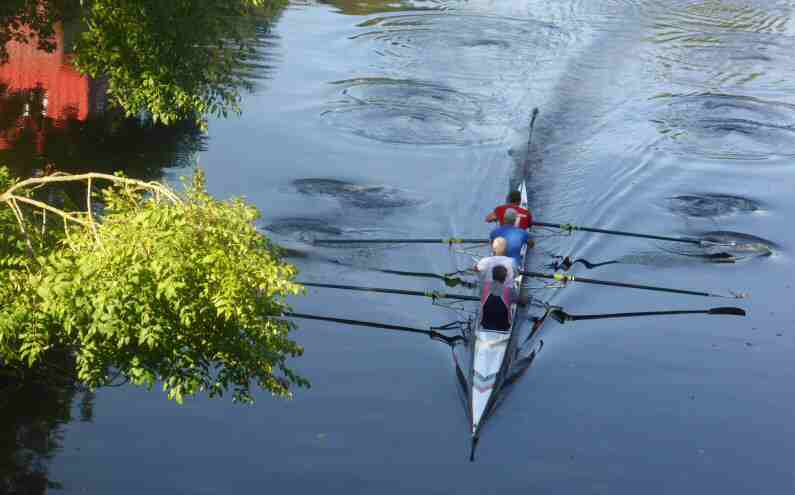RIVER DERWENT

RIVER DERWENT
The River Derwent has a truly remarkable tale to tell. Although only 60 miles in length, it fills mighty reservoirs near its source, and has been harnessed to power mills and, most importantly played an outstanding part in the Industrial Revolution. This was recognised in 2001, when the Derwent Valley was awarded World Heritage Status, the site running from Masson Mill at Matlock Bath to the former Derby Silk Mill, a distance of approximately 15 miles. It is the only World Heritage Site in the East Midlands
The Derwent is not a long river, measuring no more than 60 miles from its source to its mouth. Rising two thousand feet above sea level, amongst the rocks and peat of Swains Greave between Bleaklow and Howden Moors, near the Yorkshire border, it flows for its full course through Derbyshire. Despite its modest length, it passes through a valley of contrasting landscapes. Wildly beautiful in the north, with majestic man-made dams and reservoirs, an area often referred to as the Peak National Park’s own ‘Lake District’.
Further south, as you enter Chatsworth Park, the terrain becomes much more soft and gentle. Later, the river winds its way through the narrow gorge at Matlock, before flowing through meadows and the busy city of Derby on its way to a meeting with the River Trent, near Shardlow. One of the best-preserved inland canal ports in the country. It is a fascinating place to explore, still busy with boats, now used for leisure, but not for commerce. The boats range from traditional narrowboats with brightly painted liveries, in summer frequently be-decked with pretty boxes filled with flowers, to pleasure craft of all shapes and sizes.
Since 1950 the northern half of the Derwent Valley has been part of the Peak District National Park. It was the first National Park to be opened in Great Britain and has been such a success that it is now the second most visited National Park in the World. Visitors come to the Park to find peace, tranquillity and adventure, with some of England’s finest walking, cycling, climbing and caving readily available. The National Park itself is the home to approximately 38,000 people and not surprisingly the local economy is heavily based on tourism and farming, with quarrying and manufacturing also playing a part.
Although the southern part of the valley is outside the Peak National Park boundary, visitors are gradually discovering that it has just as much to offer. For hundreds of years, the waters from the Derwent have been harnessed to turn grindstones in corn mills, and to power hammers for the fulling of cloth and forging of metal. The waters also operated bellows to blast air into furnaces, and to drive the frames and mules for spinning cotton.
It was Richard Arkwright, later Sir Richard, who was the driving force behind the Industrial Revolution. He exploited water power to drive his machinery when he moved to Cromford and has often been referred to as the ‘Father of the Factory System’. Further south at Belper, the admirable Strutt’s North Mill Visitor Centre tells the story of Jedidiah Strutt and his family who played a major part in the Industrial Revolution. At Darley Abbey, it was the Evans family who contributed substantially to the story and at Derby the Lombe’s. All this is set in an area of considerable scenic beauty.
